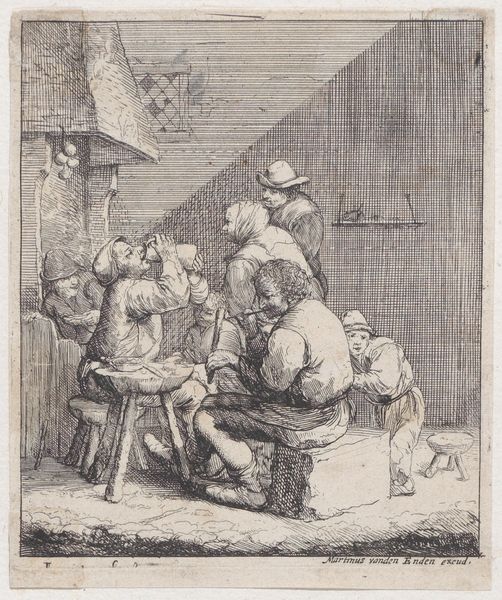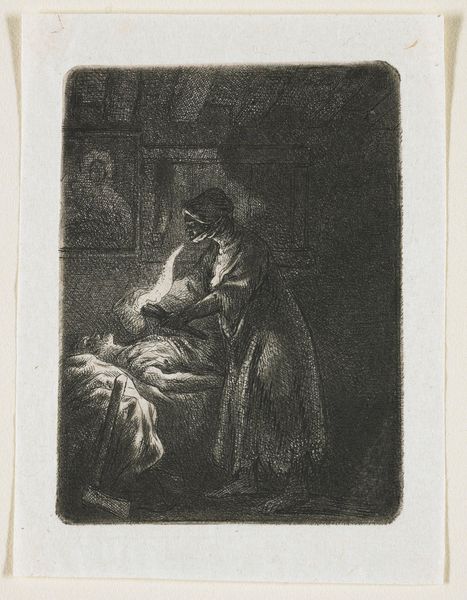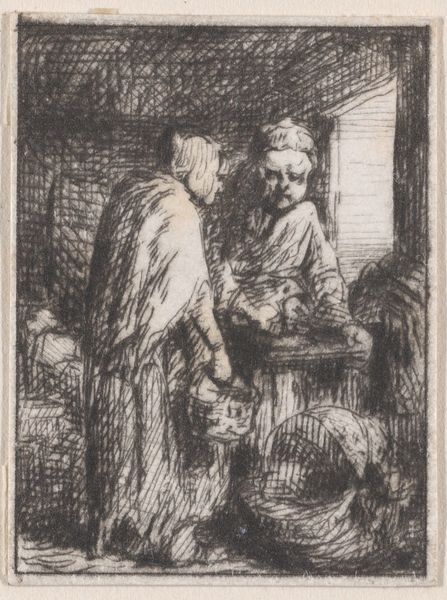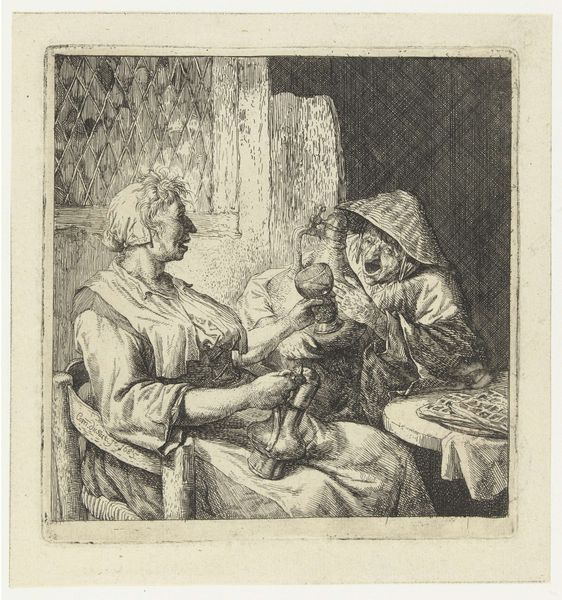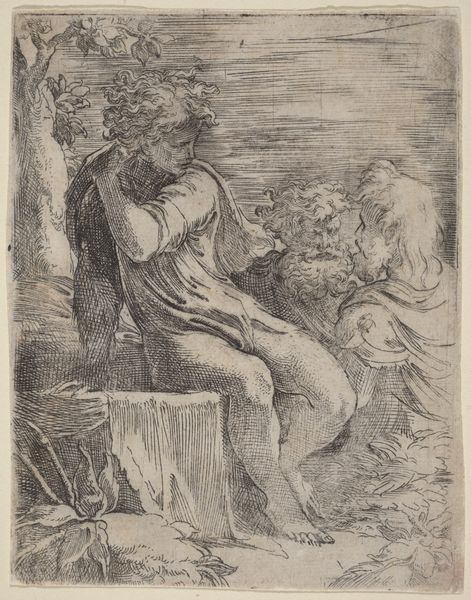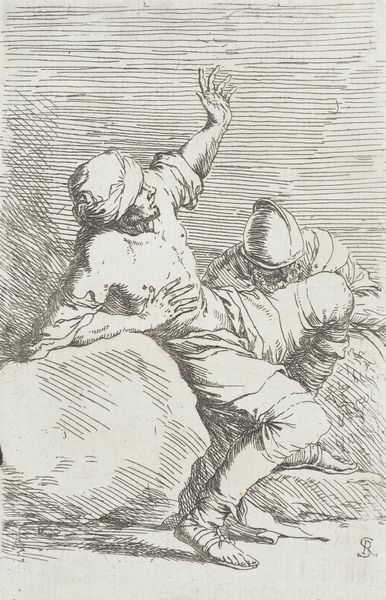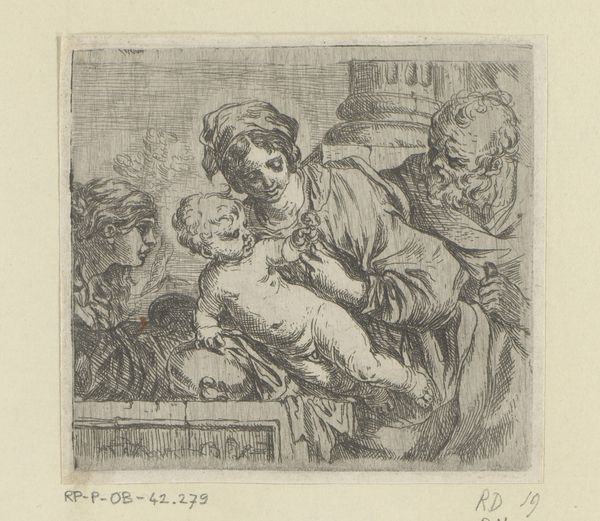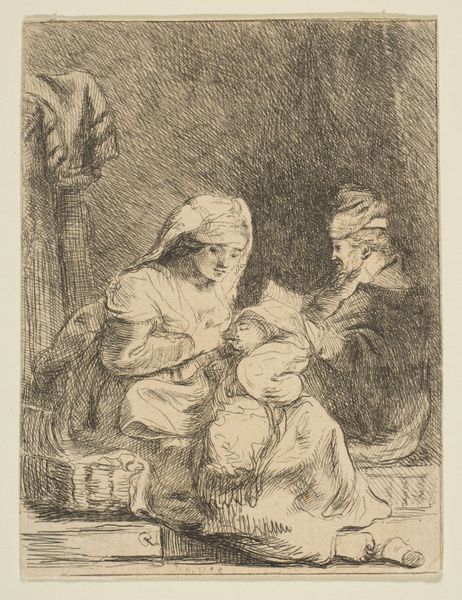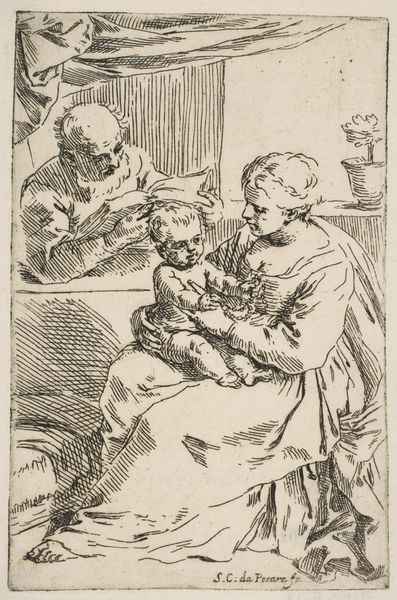
drawing, print
#
pencil drawn
#
drawing
#
amateur sketch
#
toned paper
#
light pencil work
# print
#
pencil sketch
#
charcoal drawing
#
pencil drawing
#
pen-ink sketch
#
men
#
portrait drawing
#
pencil work
Copyright: Public Domain
Curator: "The Sheepshearer", created sometime between 1830 and 1899. This artwork by Henry Linton uses pencil, print, and toned paper. I find the detail particularly impressive in the depiction of the shearing process. Editor: It feels somber. The subdued palette certainly contributes, but I think the posture of the figures also speaks to the weight of labor. They’re positioned low and focused on their labor. Curator: You bring up an interesting point. When we consider depictions of labor throughout history, sheep shearing often symbolizes a harmonious relationship between humans and nature, a collaboration if you will. It goes back centuries; sheep carry a lot of weight as both animal and cultural symbol. Editor: It’s more complex than just pastoral harmony. Who benefits from this "collaboration?" It's necessary to acknowledge the historical inequalities embedded in labor. Look at how different this looks than representations of land-owning farmers, where everything feels so leisurely by contrast. What are we meant to feel here? Are these free laborers? Indentured? Curator: Symbolically, the fleece itself represents not just physical covering and material wealth, but also themes of sacrifice, offering, and divine protection, a symbol we’ve used for millennia. Remember Jason's quest for the Golden Fleece. It goes back even further into ancient cosmologies of fertility and renewal. What we get here is the quietude, I feel, in the action itself. Editor: Quietude, maybe, but within a specific context. What class and gender expectations were being enforced in this moment of depiction? I also notice the presence of two figures, possibly depicting the roles for men and women, for the older and the younger? What power dynamics do you see emerging from it? It almost creates a study in intersectional inequalities within agrarian settings. Curator: So you bring into question who the depicted figures may be, perhaps a family in their labor together; it has hints of intergenerational symbolism. If you view these people as part of this timeless agrarian action, maybe they stand as representatives, reminding us about these symbols carried into present day, a symbolic message from the pastoral to today. Editor: Indeed, and these figures serve as a silent memorialization of those erased voices of rural working life. It provokes me to consider: what are our ethical responsibilities when we're looking at art from the past? Curator: A fitting reminder that even simple subjects hold infinite complexities. Thank you for illuminating these broader contexts in Linton's "The Sheepshearer," connecting visual legacies to modern ethical questions.
Comments
No comments
Be the first to comment and join the conversation on the ultimate creative platform.

